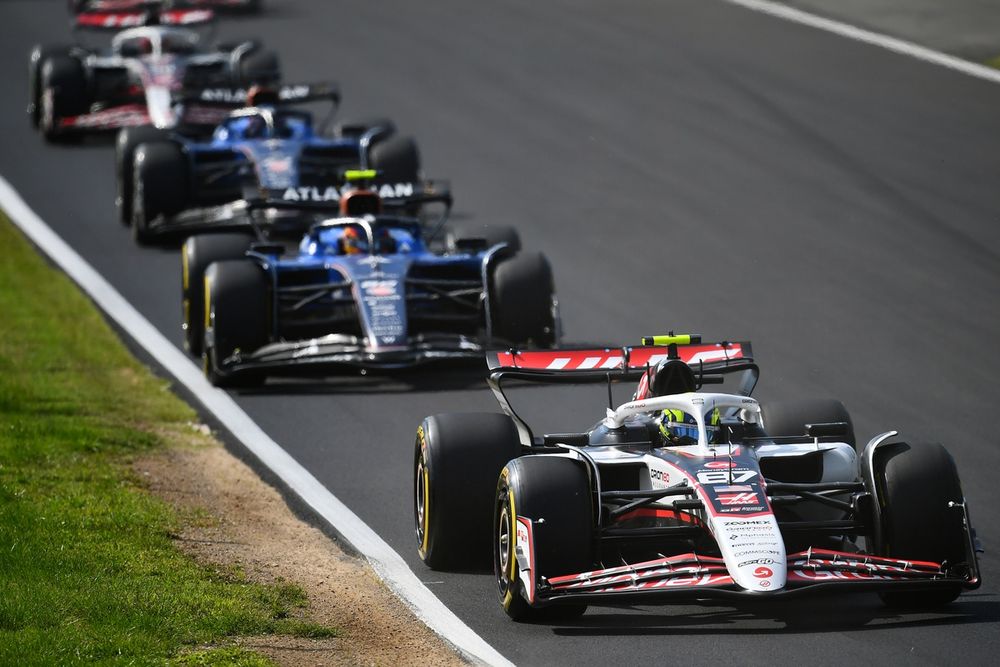Probably the most important thing you need to know about Formula 1’s Driving Standards Guidelines is written in a bold typeface, with selective capitalisation, at the top of the document: “These are GUIDELINES and NOT REGULATIONS”.
This cuts to the essence of the difficulty in giving clarity to drivers and stewards alike of what is acceptable conduct on track and what isn’t. To list every possible circumstance and an appropriate outcome would require a document the size of an old-fashioned telephone directory rather than five pages of words and diagrams.
Instead, the guidelines establish when a driver is entitled to “racing room” while overtaking on the inside or outside of a corner, plus various elements of etiquette such as impeding or driving erratically, and what is acceptable positioning while running behind the safety car.
Nuances such as moving on the straight or moving under braking are also covered. For instance, moving on the straight to break the slipstream to a pursuing car “may be acceptable” but depends upon “relative speeds and position on the track”.
They also clarify track limits and what happens when a car leaves the track: how fast it can go, the manner in which it must rejoin, and what happens if drivers gain an advantage by leaving the track.

George Russell is a director of the Grand Prix Drivers’ Association
Photo by: Clive Rose / Getty Images
Who drew up the guidelines and how long have they been in force?
The FIA introduced the guidelines ahead of the 2022 season in consultation with the Grand Prix Drivers’ Association (GPDA). They have been through several evolutions.
They were revised for 2025 – and are now on Version 4.1 – after a number of controversial incidents late last season, such as when George Russell was penalised for running Valtteri Bottas off the track at Turn 1 while passing him in the US GP.
Perhaps more germane to the championship outcome, high-profile ‘moments’ between Lando Norris and Max Verstappen in the US and Mexico City Grands Prix brought driving standards to the top of the agenda. The FIA met with the GPDA ahead of last year’s Qatar GP to improve and clarify the wording of the guidelines.
It was felt the original stipulation that the driver whose front axle was ahead at the apex essentially ‘owned’ the corner was too easily exploited – one only had to make an opportunist dive in attack, or release the brakes early in defence, to ‘game’ the outcome.

Max Verstappen, Red Bull Racing RB20, leads Lando Norris, McLaren MCL38
Photo by: Andy Hone
What are the guidelines and what has changed?
While the introduction to the guidelines emphasises that some subjectivity is inevitable, the key points exist to establish when an overtaking car is entitled to be given “priority”, i.e. room to complete the manoeuvre. They also make it clear that when these conditions are satisfied it becomes “the responsibility of the defending driver to avoid a collision”.
The wording on relative positions of the cars is now different depending on whether the attacking driver is looking to overtake on the inside or outside. On the inside line, the overtaking car must “have its front axle at least alongside the mirror of the other car prior to and at the apex” and “be driven in a fully controlled manner particularly from entry to apex, and not have ‘dived in’”. The overtaker must also have “taken a reasonable racing line and been able to complete the move while remaining within track limits”.
The first set of guidelines also included a stipulation that the overtaking driver had to leave space for the other at the exit – this was what caught Russell out in Austin. It was struck out because the drivers argued it was too prescriptive, and unnecessary provided the cars were under control.
The first high-profile casualty of the new wording here was Max Verstappen in Saudi Arabia this year: Oscar Piastri went up the inside into Turn 1, was deemed under control and clearly had his front wheels ahead of Verstappen’s mirrors before the apex, so as far as the guidelines were concerned the corner was his. Neither did he have to leave room for the other car.
Verstappen went over the run-off and rejoined still in the lead – the guidelines define this as having “gained a lasting advantage” and “generally, the position should be given back”. The Dutchman didn’t and was penalised.

Oliver Bearman, Haas F1 Team, Carlos Sainz, Williams, Alexander Albon, Williams
Photo by: James Sutton / LAT Images via Getty Images
The guidelines relating to overtaking around the outside explicitly acknowledge that this is “a more difficult manoeuvre to accomplish”. But, it also states clearly that the overtaking car must have its front axle ahead of the other car’s front axle at the apex, “be driven in a controlled manner from entry, to apex, to exit”, and must be able “to make the corner within track limits”.
In the Italian Grand Prix, Oliver Bearman was penalised for colliding with Carlos Sainz when the Williams driver tried to pass him around the outside at the Variante della Roggia chicane. Under the guidelines, Sainz had fulfilled the conditions so the onus was on Bearman to not hit him.
In chicanes and S-bends the guidelines for inside and outside apply for each element of the complex, but “generally, priority will be given to the first corner element”.
What about different tyre ages and compounds?
The guidelines say “the stewards will always look at how the situation played out in total when reviewing an incident” because “racing is a dynamic process”. They go on to list a series of examples that isn’t exhaustive, but includes the kind of circumstances and variables that must be considered.
These include not only tyre age, compound choice and available grip, but also whether the configuration of the corner contributed to the incident as well as the approach of the drivers.
When assessing driver input, the stewards will consider the nature of the move – such as whether it was “optimistic” – and how the cars were being driven in the run-up to and during the incident.
For instance, when Williams sought a ‘right of review’ over Carlos Sainz’s penalty from last month’s Dutch GP, the FIA ultimately struck out the penalty – but only because Liam Lawson had a momentary bout of oversteer, which caused the contact. The stewards’ finding maintained that Sainz hadn’t fulfilled the conditions required to be given ‘right to room’.

